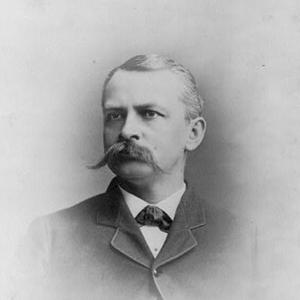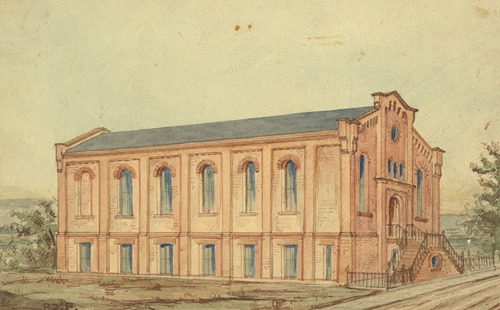

Paul J. Pelz
Paul Johannes Pelz was a German-American architect, best known as the main architect of the Library of Congress in Washington D.C.
Pelz was born November 18, 1841, in Seitendorf (now Poniatów), in Waldenburg, Silesia, now part of Poland. His father, Eduard Pelz, was elected as a representative of Silesia to the Frankfurt Parliament in 1848. Subsequent political repression led him to emigrate to the U.S. in 1851 while the rest of the family temporarily stayed in Breslau, where Paul studied at the colleges of St. Elizabeth and Holy Spirit.
In 1858, Paul Pelz joined his father in New York City, and served there as apprentice to architect Detlef Lienau. In 1864, he was employed as chief draftsman by Jewish architect Henry Fernbach, who designed the Central Synagogue in New York City. In 1866, Pelz became a member of the American Institute of Architects.
In 1867, he moved to Washington, D.C., and was engaged as a civil engineer for the United States Lighthouse Board, where from 1872 to 1877 he served as chief draftsman. His work won a prize for the Lighthouse Board at the 1873 Universal Exhibition in Vienna.
In 1873, Pelz and John L. Smithmeyer, another Washington, D.C.-based architect, together won the competition for the architectural plans for the Library of Congress. Their winning design proposal was partly based on notes Pelz had taken on prominent public libraries when he traveled to Europe to collect the prize in Vienna. In the ensuing years Pelz also partnered with Smithmeyer on other projects. The difficulties experienced on the Library of Congress project, with many delays for congressional dithering, eventually strained their collaboration. In 1888 Pelz became the lead architect for the Library of Congress as Smithmeyer was dismissed; Pelz in turn was dismissed in 1892 and succeeded by Edward Pearce Casey. Pelz had the main role in the design of the building and the execution of its exterior, while Smithmeyer was instrumental in securing the commission and Casey supervised most of the interior finishings.
Pelz's offices were in the Corcoran Building on 15th and F Street NW, which hosted several prominent architecture firms, now the site of the Hotel W near the US Treasury Building. He designed churches, public buildings, private houses and commercial buildings, and also participated in key debates of the time on Washington's urban design. In 1887, while still in partnership with Smithmeyer, he proposed an exuberant neo-medieval design for a new memorial bridge across the Potomac in honor of Ulysses S. Grant, a predecessor plan to the Arlington Memorial Bridge which was eventually built in the 1930s. In 1898, at the request of socialite Mary Foote Henderson, he proposed designs for a new Executive Mansion to replace the White House on what is now Meridian Hill Park. Pelz was a prominent participant in the 1900 Convention of the American Institute of Architects and presented a plan there for the remodeling of the National Mall which was a key source of the McMillan Plan the following year.
Pelz's first wife, Louise Dorothea Kipp, died in 1894. In 1895, he remarried with Mary Eastbourne (Ritter) Meem (1849–1914).
On 30 March 1918, he died in Washington, D.C. He is buried together with his second wife in Oak Hill Cemetery in Washington, D.C.
